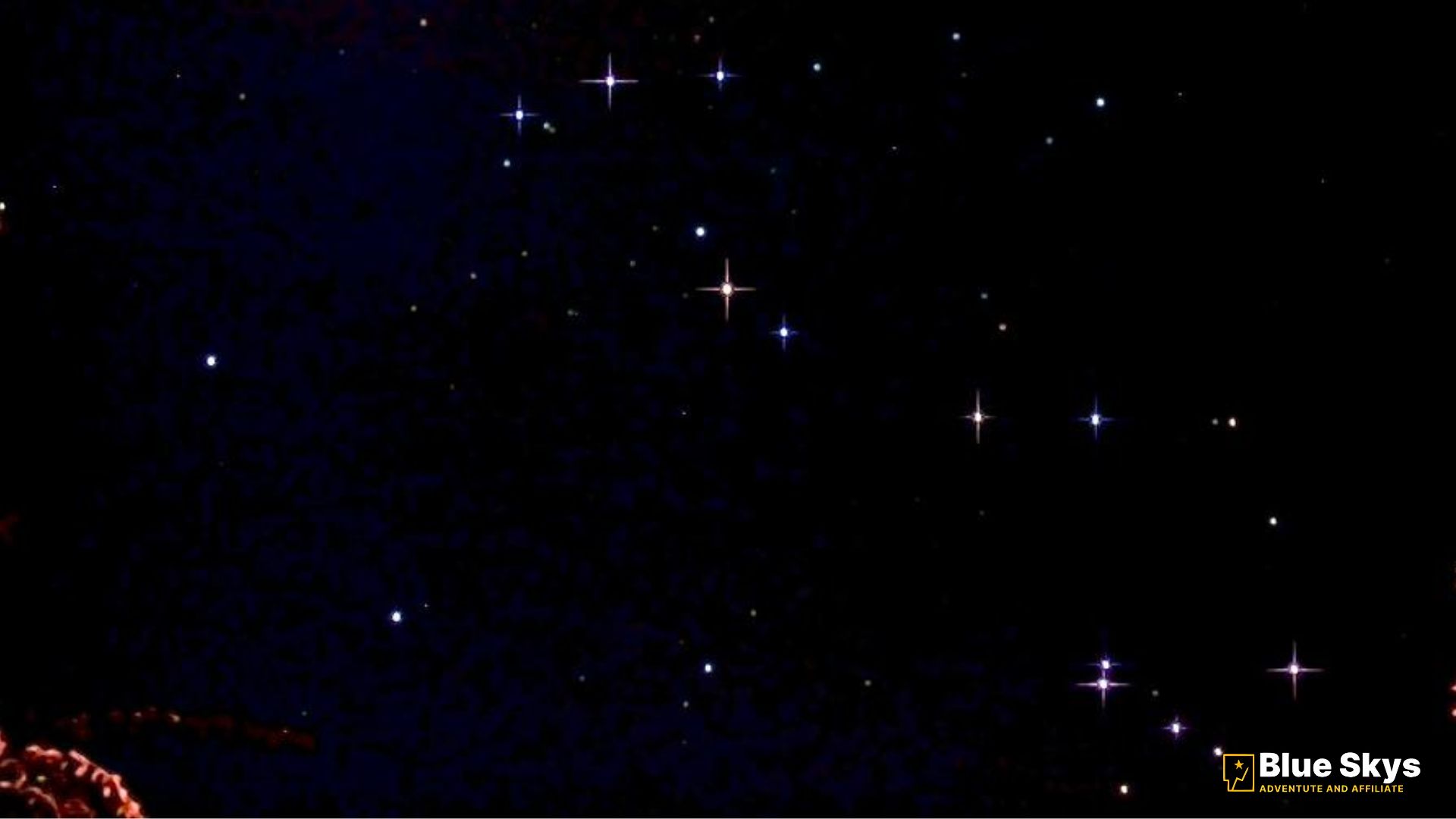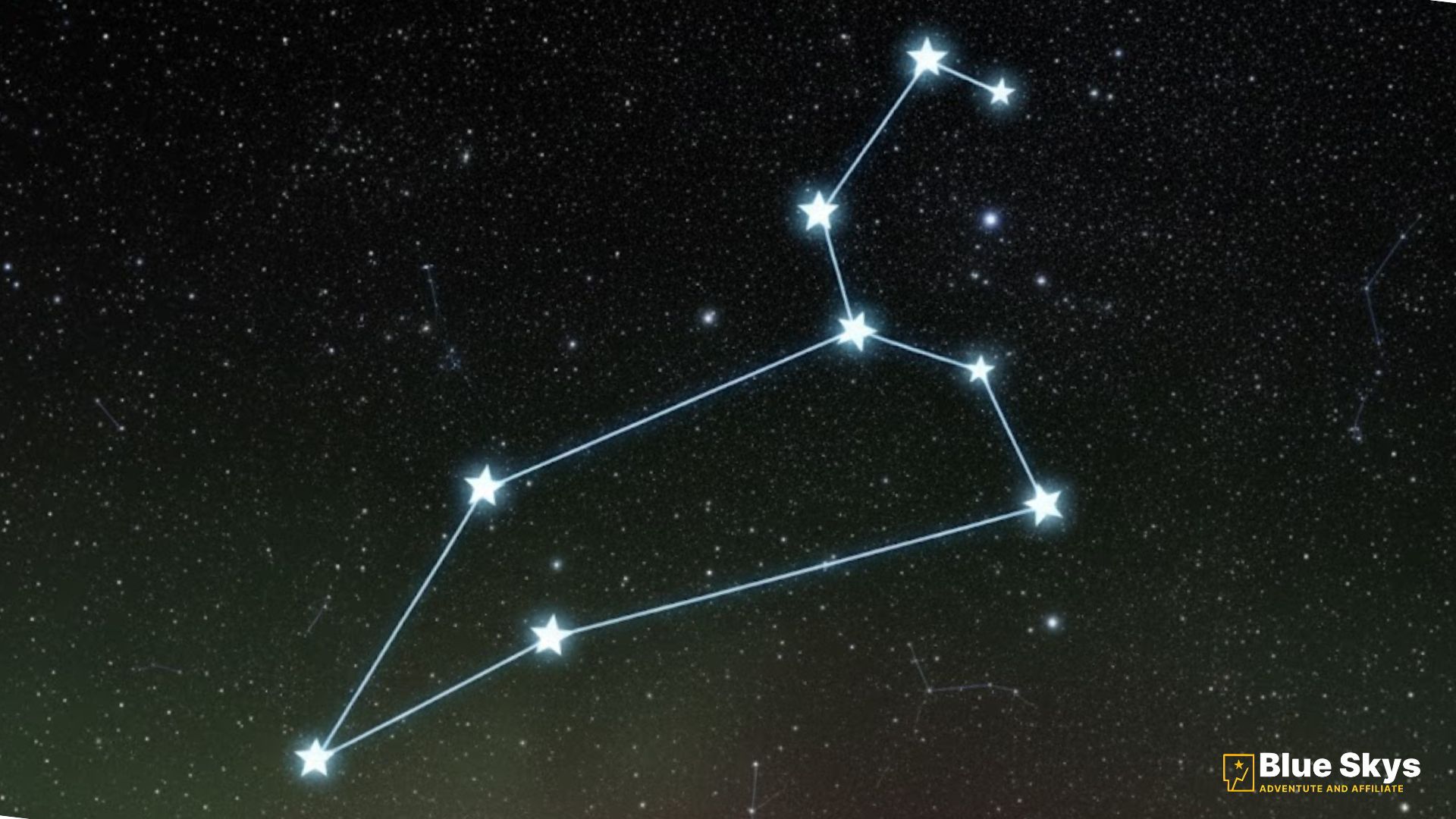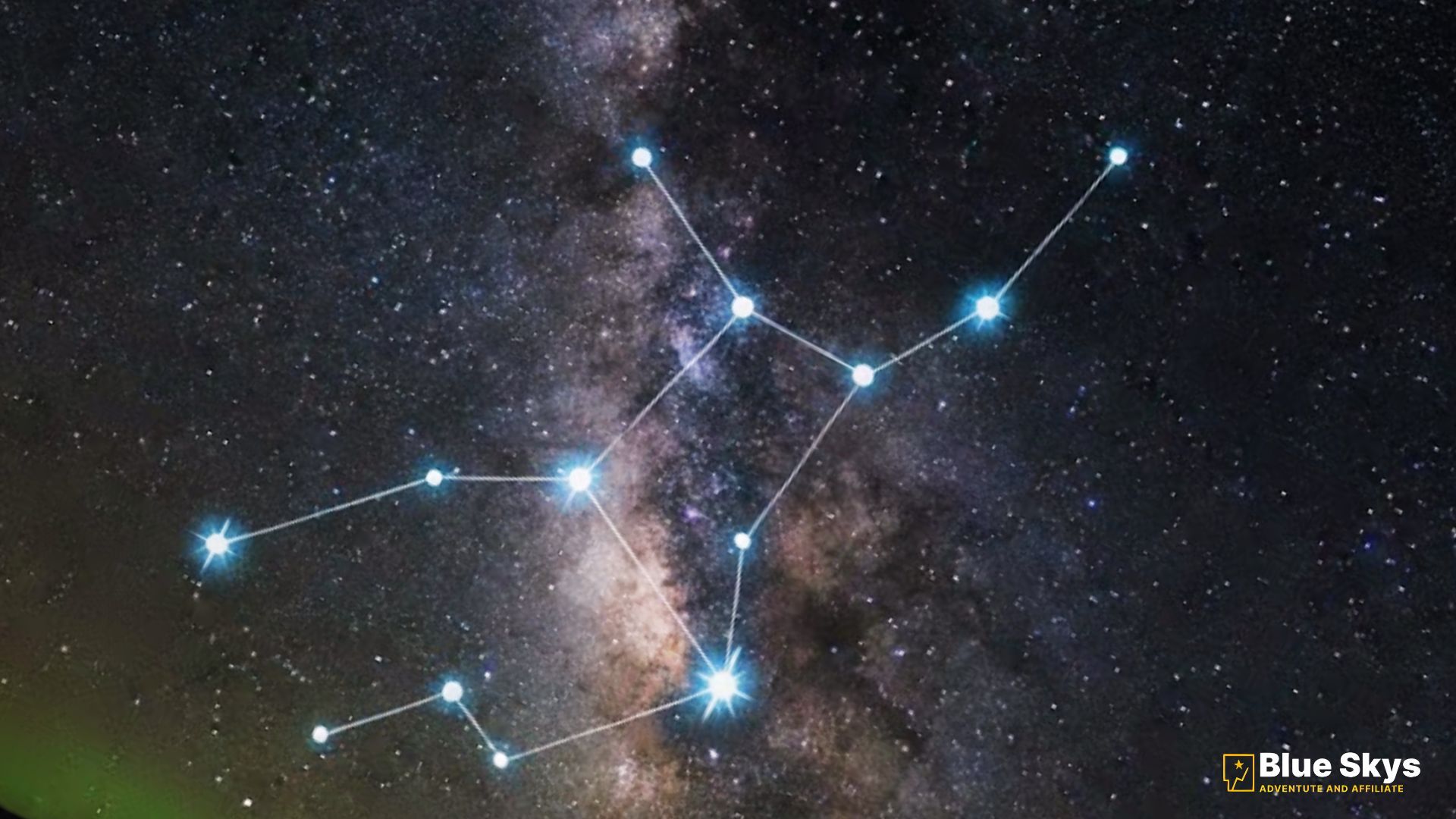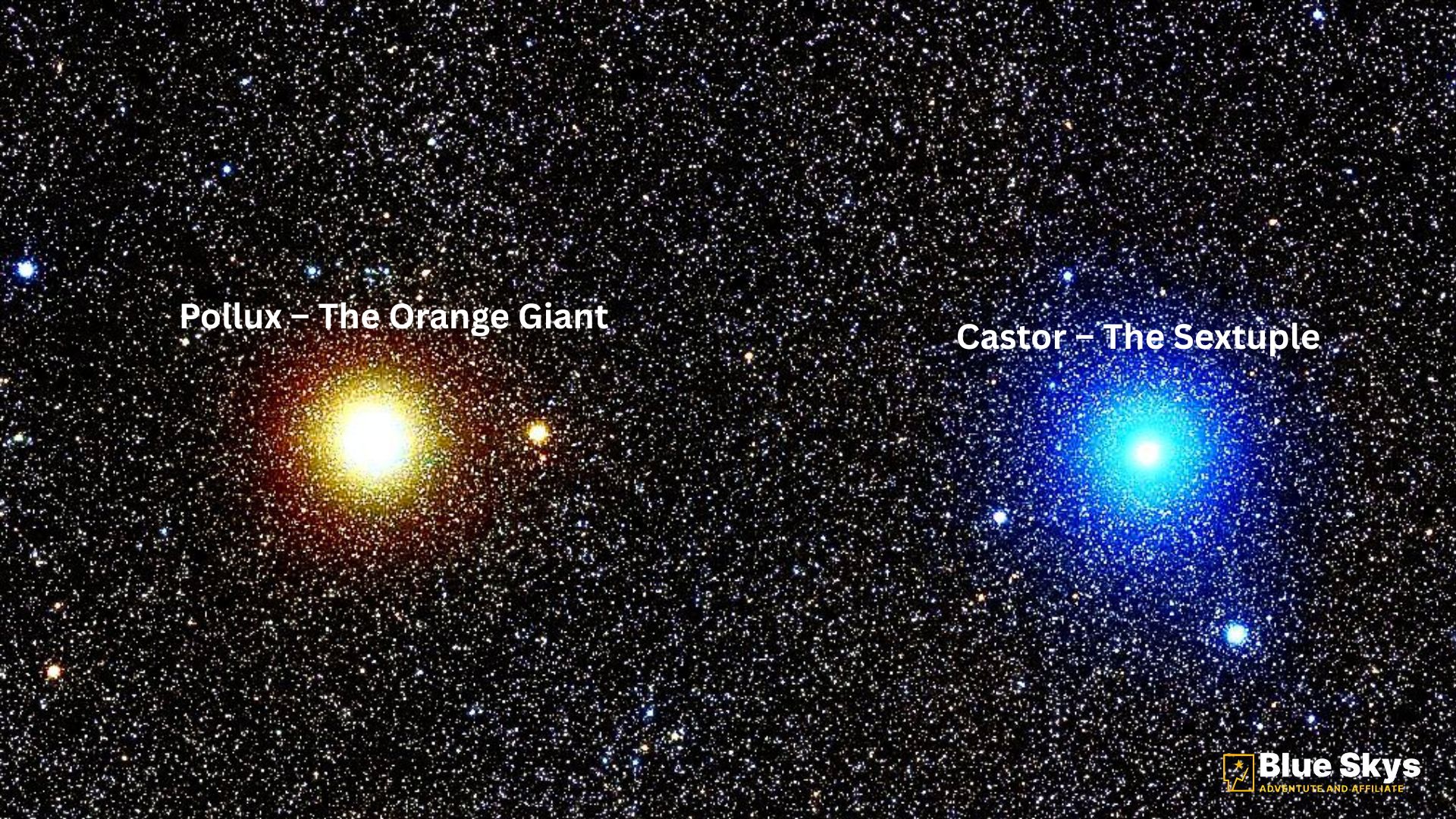If there’s one constellation that captures the dramatic, unforgettable beauty of the night sky, it’s Scorpius constellation. You don’t need a star chart to find it; the celestial scorpion is one of the most vividly shaped patterns visible to the naked eye. With its long, curved body and the throbbing red giant at its core, Scorpius is more than just a figure—it’s a dynamic roadmap to the richest parts of our galaxy.
Known since the dawn of astronomy, this is one of the original twelve zodiac constellations, tracing the path of the Sun. The ancient Sumerians called it MUL.GIR.TAB, and for good reason: it’s absolutely unmistakable. Crucially for us, Scorpius lies directly along the plane of the Milky Way, making it a cosmic goldmine packed with stunning deep sky objects, clusters, and nebulae.
Let’s dive into the Scorpion’s domain and learn exactly how to find Scorpius constellation and its treasures.
Astrophysics Corner: The heart of the Scorpion marks a key location in the sky, positioned at approximately right ascension (RA) 16h 53m and declination (Dec) −30° 44′.
1. Finding the Scorpion: Your Seasonal Viewing Guide
To enjoy Scorpius, you just need to know when and where to look.
The Best Time and Location
The prime viewing period for Scorpius spans from May to September. However, it truly shines, rising highest in the late evening hours of July and August.
- The Southern Hemisphere Advantage: If you live in the Southern Hemisphere (Australia, New Zealand, etc.), you’re incredibly lucky. Scorpius travels high overhead during your winter months. If you search for Scorpius visibility in July Southern Hemisphere, you’ll see why the sight is often called the “King of the Southern Sky.” It dominates the view, revealing breathtaking detail against the backdrop of the Milky Way’s central bulge.
- The Northern Hemisphere View: For those of us north of the equator (above 40°N), Scorpius hugs the southern horizon. You need a clear, unobstructed view without trees or buildings. Look immediately after sunset during peak summer—it’s worth the effort!
Step-by-Step Identification: The Signature Hook
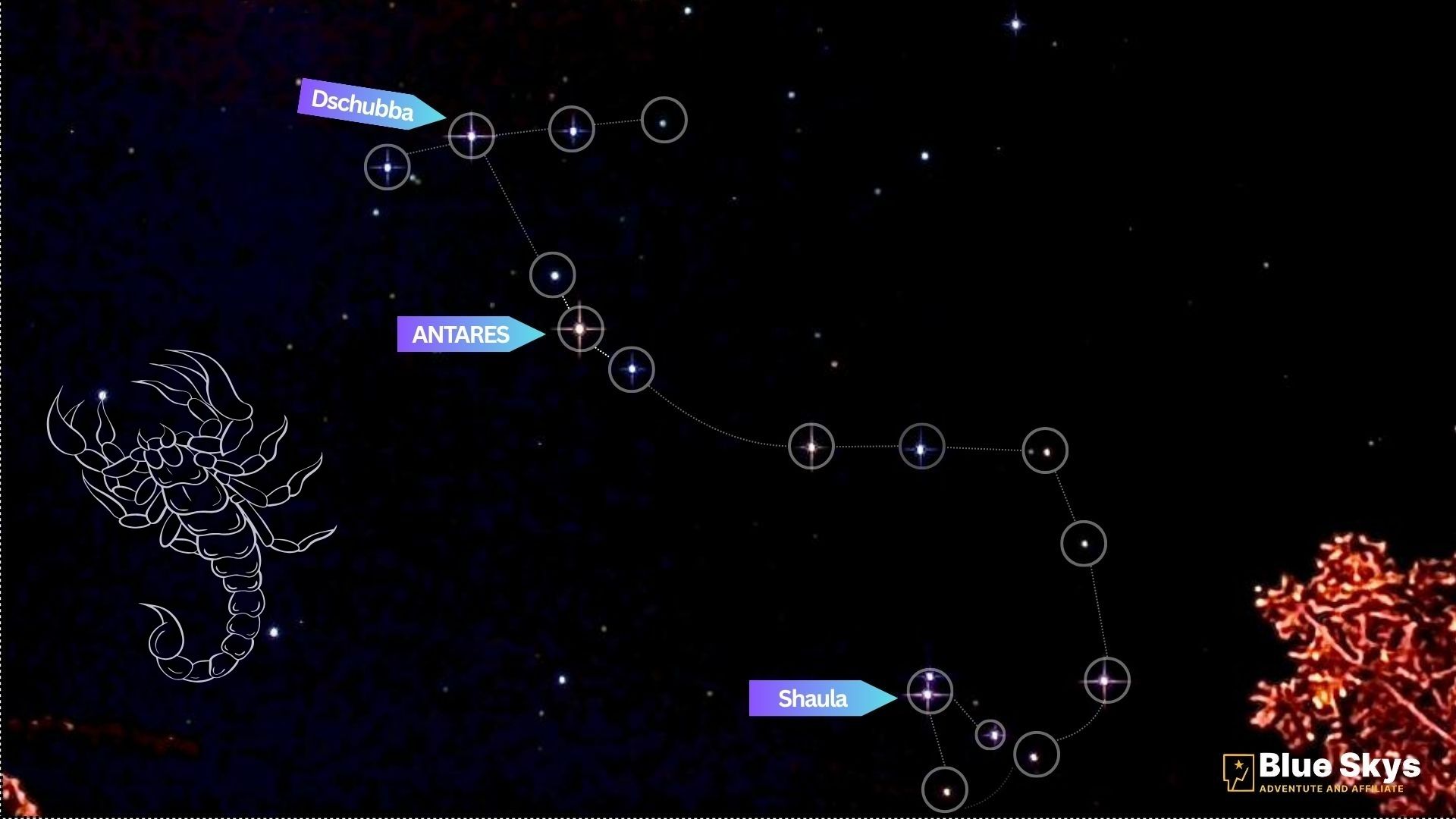
Forget the star charts for a moment and look for this tell-tale shape:
- Spot the Heart: Look south (or high overhead, depending on your latitude) for a star with a noticeable reddish-orange star color. This is Antares. It’s big, bright, and stands out.
- Trace the Body: Starting at Antares, look west (to the right) to find a cluster of bright, hot, blue-white stars—this forms the Scorpion’s head, featuring Dschubba (Delta Scorpii) and Acrab (Beta Scorpii).
- Follow the Stinger: The distinctive part! Follow the tail curving down and back up to the east (left). The very tip is marked by two gorgeous, close-set bright stars: Shaula and Lesath Scorpius stinger stars. This hook shape is what makes the Scorpion impossible to miss.
2. Antares: The Star at the Center of the Drama
The star Antares is the heart of the Scorpion and the undisputed focal point of the constellation.
Massive, Red, and Ready to Explode
When you look at Antares, you’re looking at a genuinely enormous, fading star. Its name, which means “rival of Ares” (or Mars), was earned because its deep, intense hue rivals the color of the Red Planet.
Here are the crucial Antares Scorpius facts:
- Cosmic Scale: Antares is a red supergiant star, one of the largest and most luminous stars we can observe. If you replaced our Sun with Antares, its surface would extend past the orbit of Mars!
- Distance and Classification: It lies approximately 550 light-years away. This giant is classified as Spectral type M1.5 Iab-Ib, which tells astronomers its low surface temperature gives it that characteristic red color.
- The Hidden Companion: If you use a moderate telescope, look closely. You can spot Antares B, a faint, hot, blue-white companion star tucked right beside the giant. This spectacular color contrast—fiery red next to brilliant blue—is one of the night sky’s most rewarding visual targets.
The Intriguing Variability of Dschubba
While Antares gets all the fame, don’t overlook Dschubba (Delta Scorpii) in the head. This star is fascinating for advanced hobbyists because it is a known variable star.
If you’re looking for a fun, long-term personal astronomy project, tracking the Dschubba Delta Scorpii star variability over the course of several months offers a rewarding challenge—its brightness sometimes fluctuates quite dramatically, proving that even “fixed” stars are dynamic.
3. Deep-Sky Treasures: A Galaxy on Display
Because Scorpius is located in one of the most star-dense regions of the sky, it is the perfect hunting ground for deep sky objects. If you need a Scorpius deep sky objects list, look no further. This constellation is absolutely loaded with stunning targets for both the naked eye and binoculars.
Top Binocular Targets
These clusters are must-sees and make the Scorpion a favorite for those seeking Scorpius best stars for binocular observation:
- M4 (NGC 6121): This beautiful globular cluster is the easiest to find; it sits just a single degree to the west of Antares. It appears as a fuzzy, bright ball and is a spectacular sight even in small binoculars.
- M6 – The Butterfly Cluster: True to its name, this open cluster looks exactly like a butterfly with its wings spread against the vast blackness. It’s an accessible target for small telescopes and binoculars.
- M7 – Ptolemy’s Cluster: So large and bright that Ptolemy himself recorded it in the 2nd century. It is easily visible to the naked eye under dark skies and appears brilliantly scattered across a binocular field of view.
Nebula Hunting
The Milky Way backdrop also offers amazing nebulosity. While they require a telescope and dark skies, targets like NGC 6334 (the Cat’s Paw Nebula) and NGC 6357 (the War and Peace Nebula) are star-forming regions that reveal stunning colors in long-exposure photographs.
4. The Ancient Rivalry: Scorpius and Orion Mythology
The constellation carries a powerful history of conflict that connects our ancestors to the stars. The Scorpius and Orion mythology astronomy tale is perhaps the most famous rivalry in the celestial sphere.
According to Greek legend, the great hunter Orion boasted that he would kill every animal on Earth. This arrogance angered Gaia (Mother Earth), who sent a giant scorpion to defeat him. The Scorpion succeeded, stinging Orion to death. As a consequence of this epic battle, Zeus placed both combatants in the sky, but on opposite sides of the celestial sphere.
This is why, to this day, you will never see the night sky together—as Scorpius rises in the east in the summer, Orion is setting in the west, forever fleeing the celestial scorpion.
5. Capturing the Beauty: Your Astrophotography Checklist
The density and color of this region make it one of the most sought-after subjects for astrophotography. If you want to know how to photograph Scorpius Milky Way, follow these practical steps.
Essential Settings for Capturing Scorpius
- Gear Up: A standard DSLR or mirrorless camera with a fast, wide-angle lens (in the 14mm-35mm range) is perfect for capturing the constellation and the surrounding Milky Way core in a single frame.
- Optimal Settings (Untracked): Use a high ISO between 1600 and 3200. To avoid star trailing, keep the shutter speed limited to between 15 and 25 seconds.
- Frame the Heart: Position Antares and the central body of Scorpius in the center of your frame, ensuring the “stinger” and the dense star clouds of the galactic center are also included.
- Go Deeper: If you have an equatorial tracking mount, you can take much longer exposures (3-5 minutes) to bring out the faint pink and blue nebulosity surrounding stars. For advanced work on individual targets, consult a detailed scorpius cluster astrophotography guide specific to objects like the Cat’s Paw Nebula.
Final Thoughts: The Scorpion Awaits
The Scorpius constellation is a masterpiece of the cosmos. Whether you’re drawn to the ancient story of its rivalry with Orion, the sheer scale of the Antares star facts, or the breathtaking number of deep sky objects within its curving reach, the Scorpion is a lifetime of discovery wrapped up in one magnificent celestial figure. Find a dark sky, grab your binoculars, and enjoy the view!
